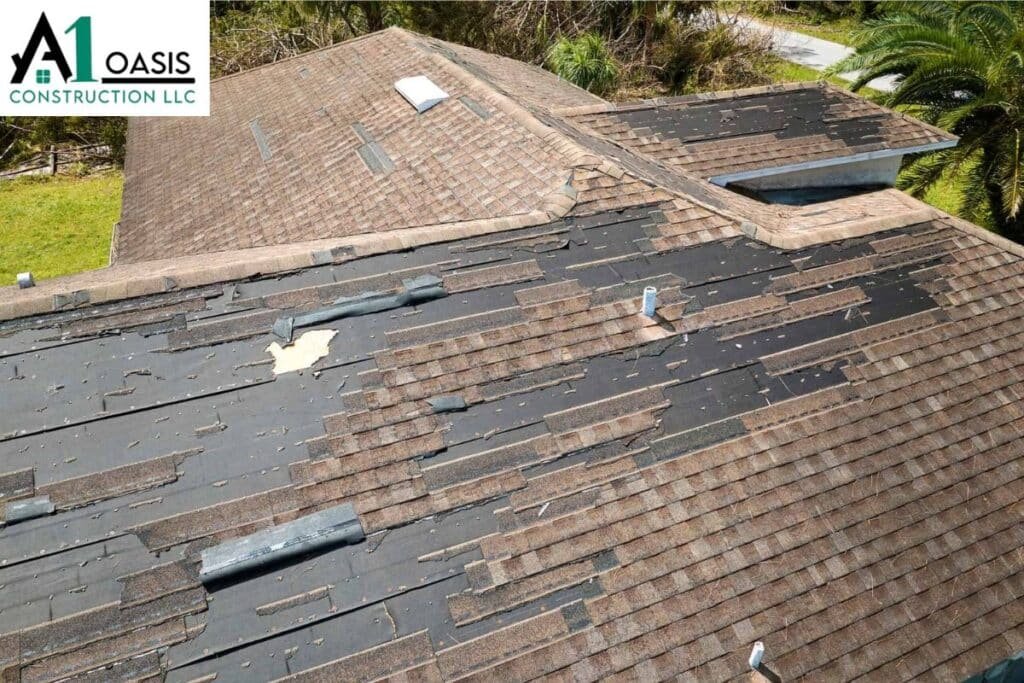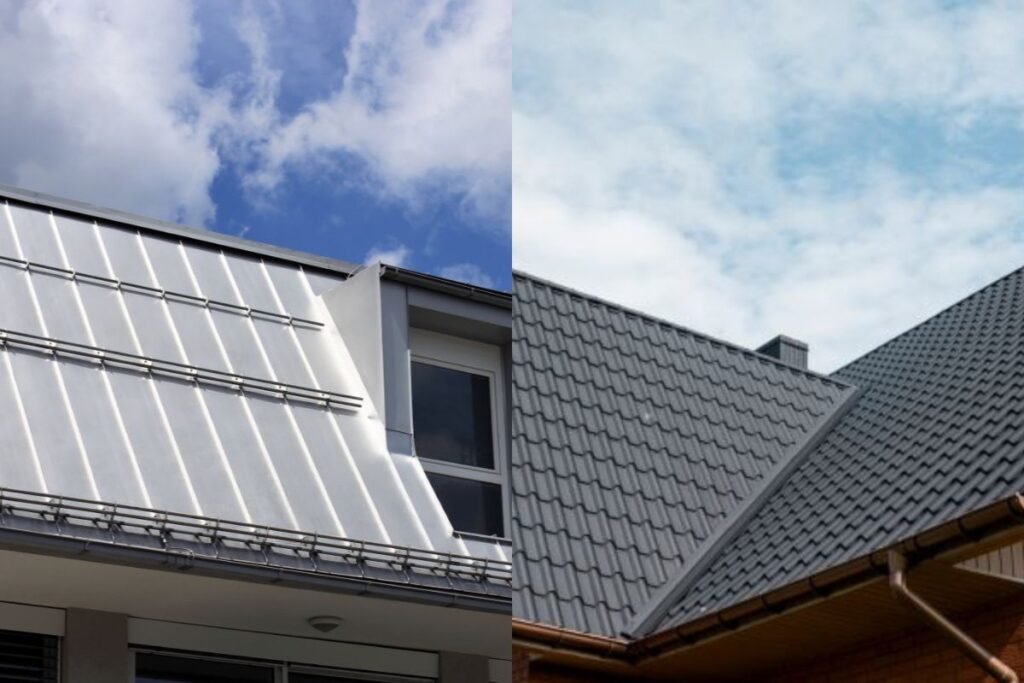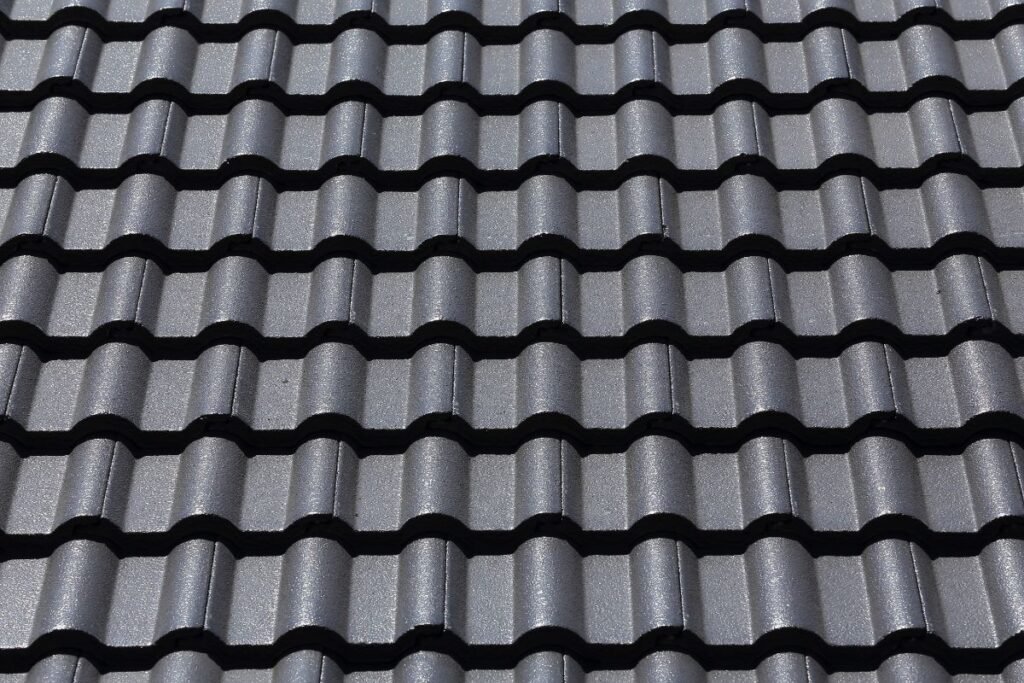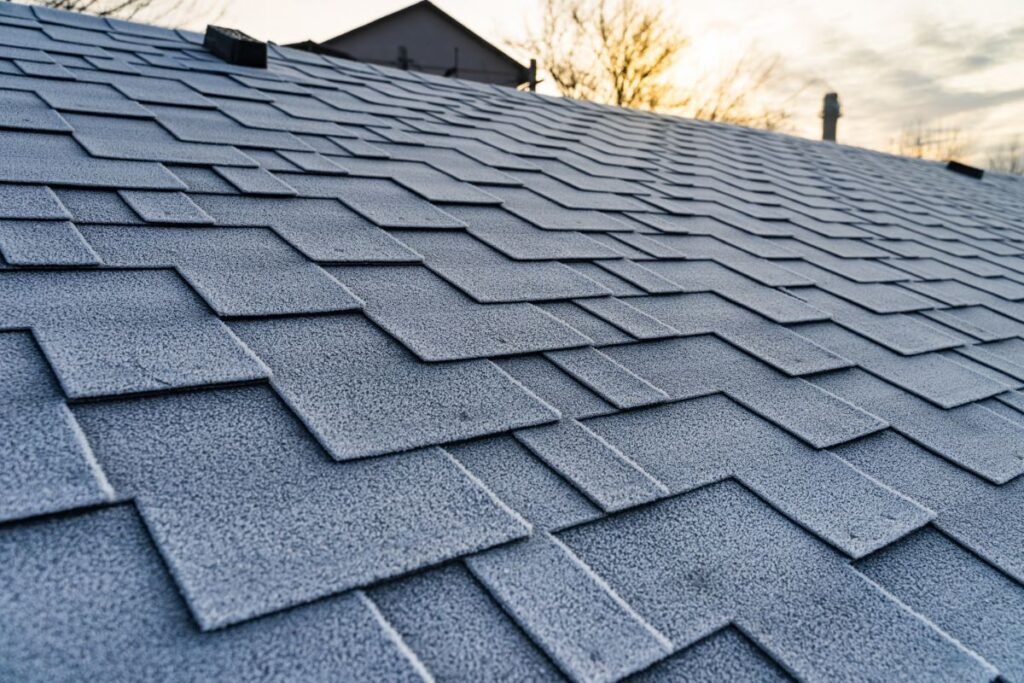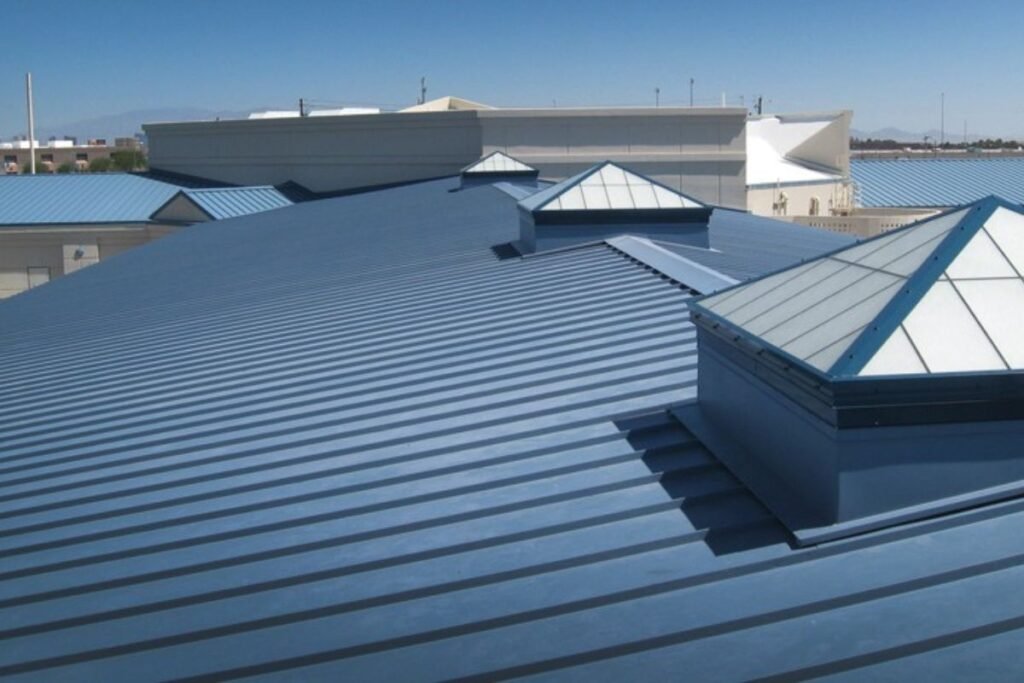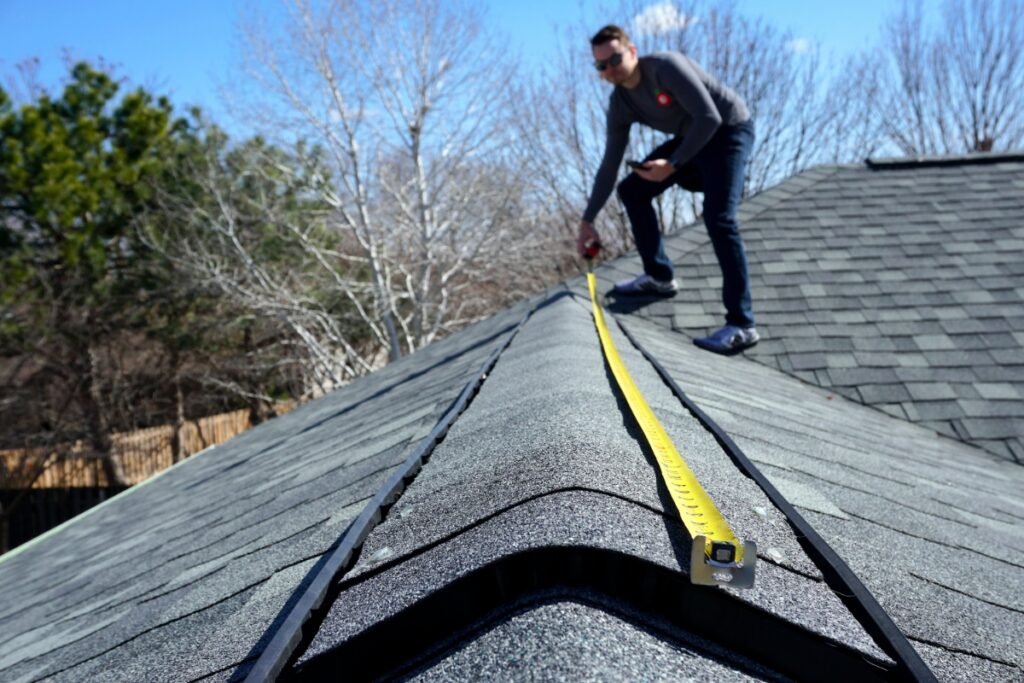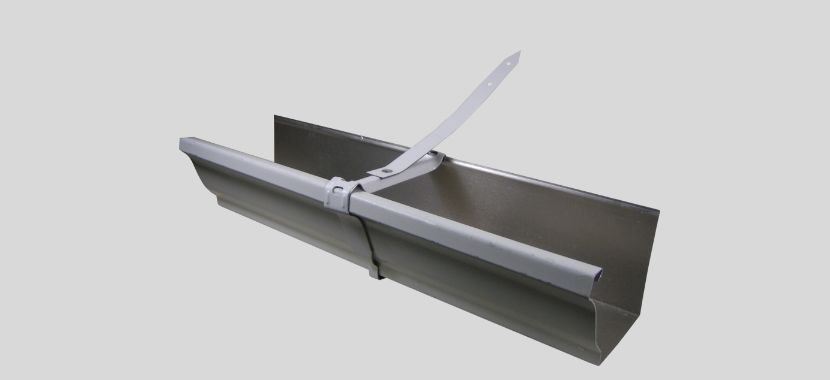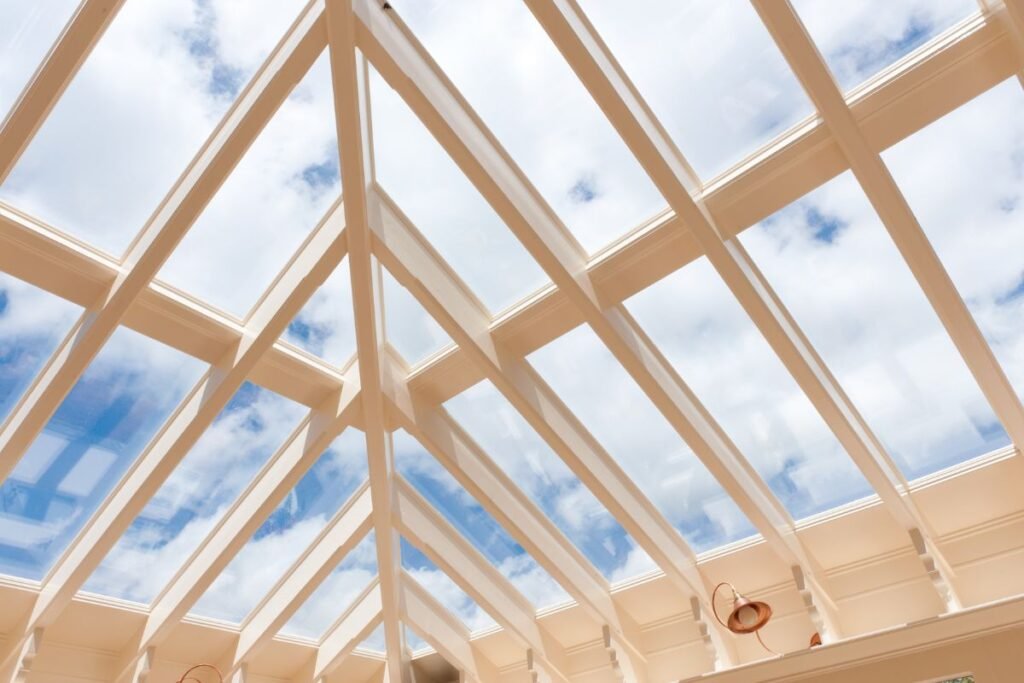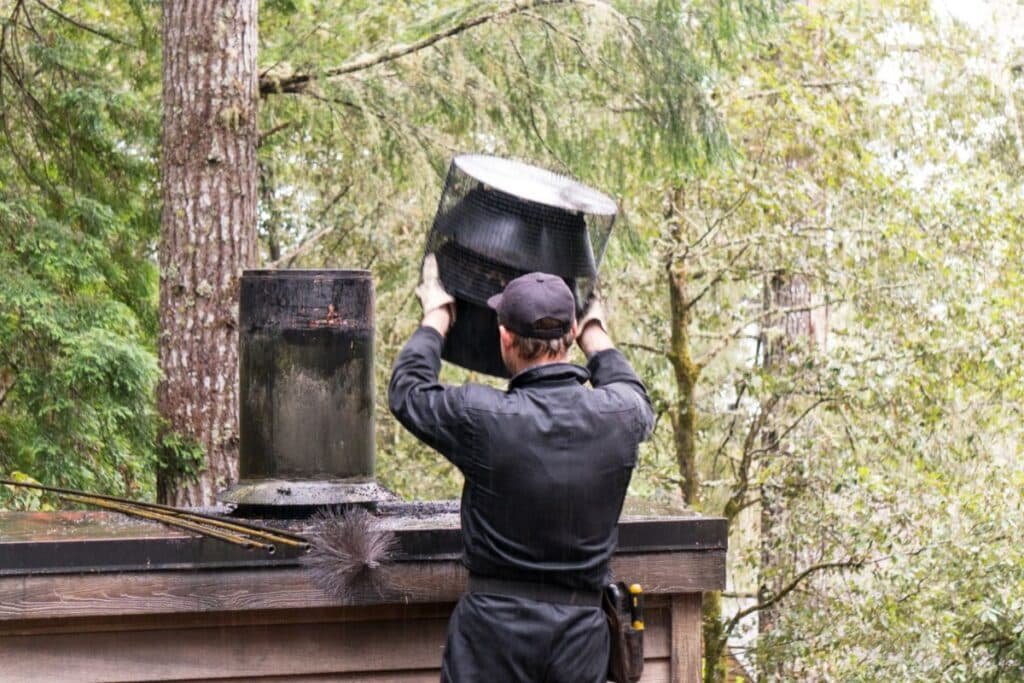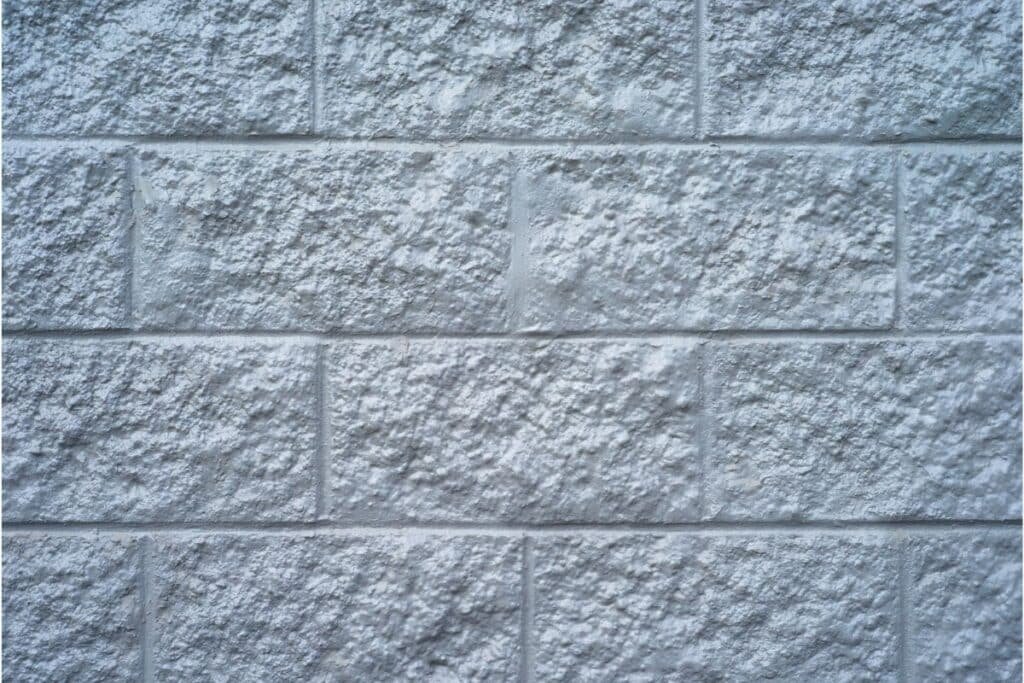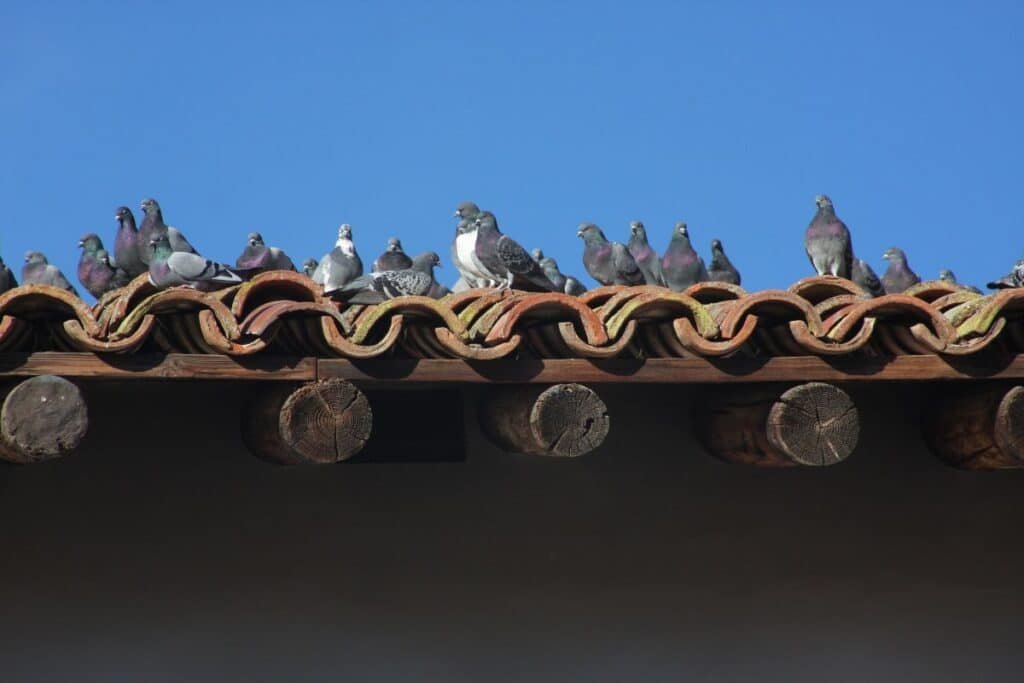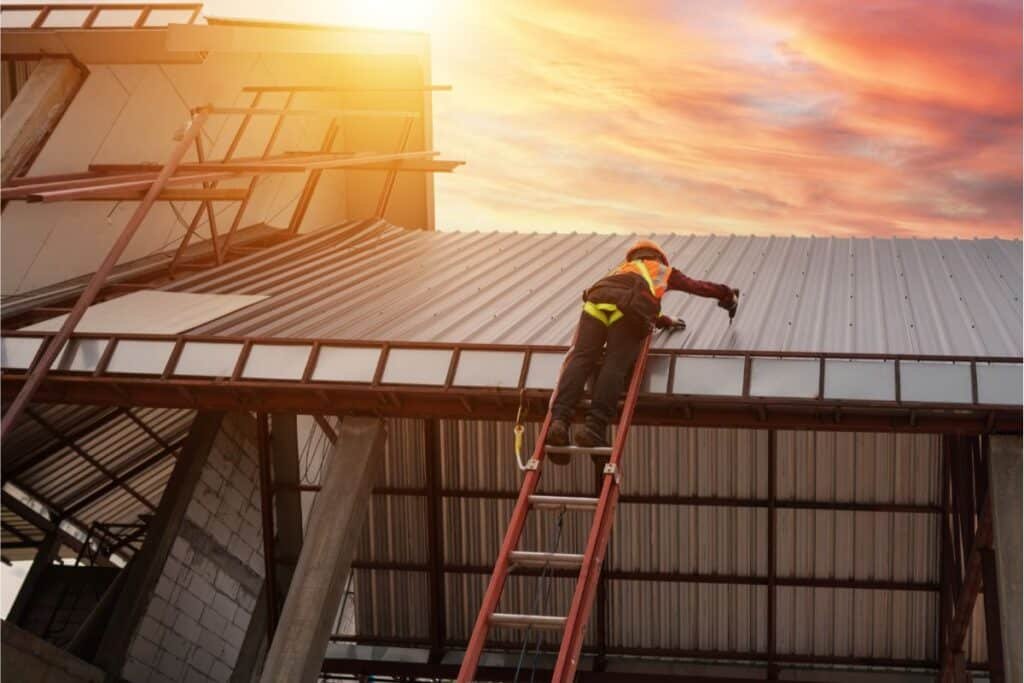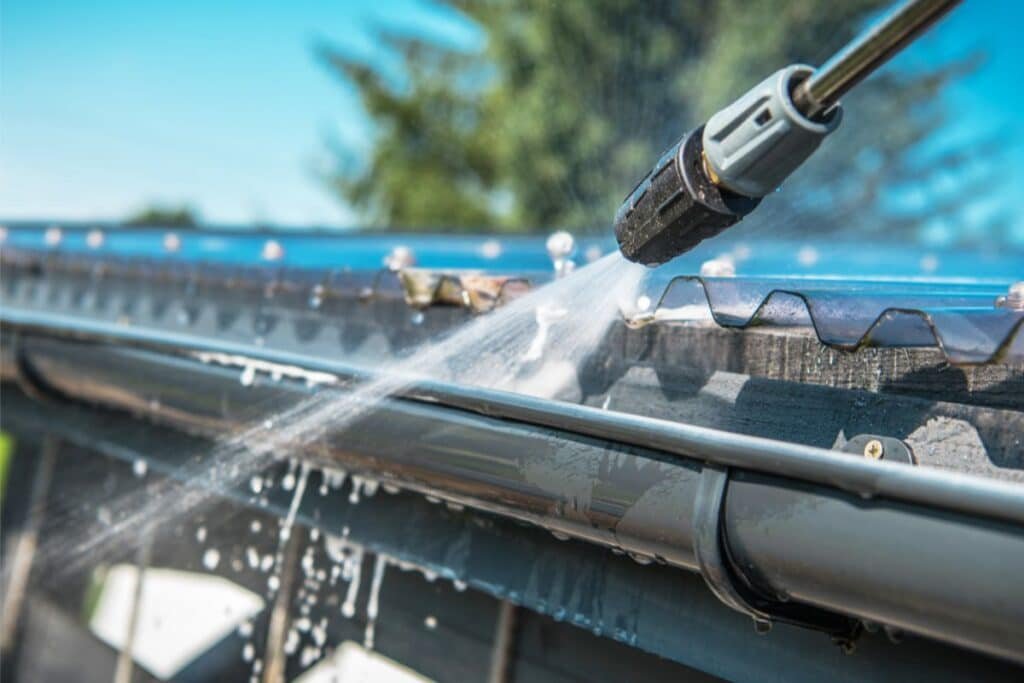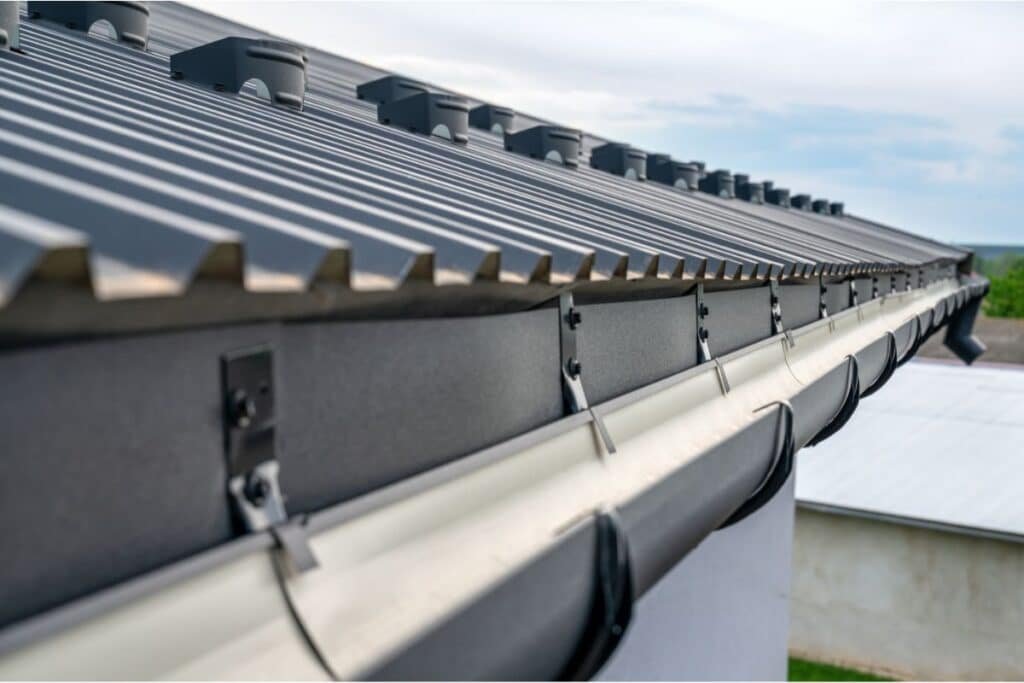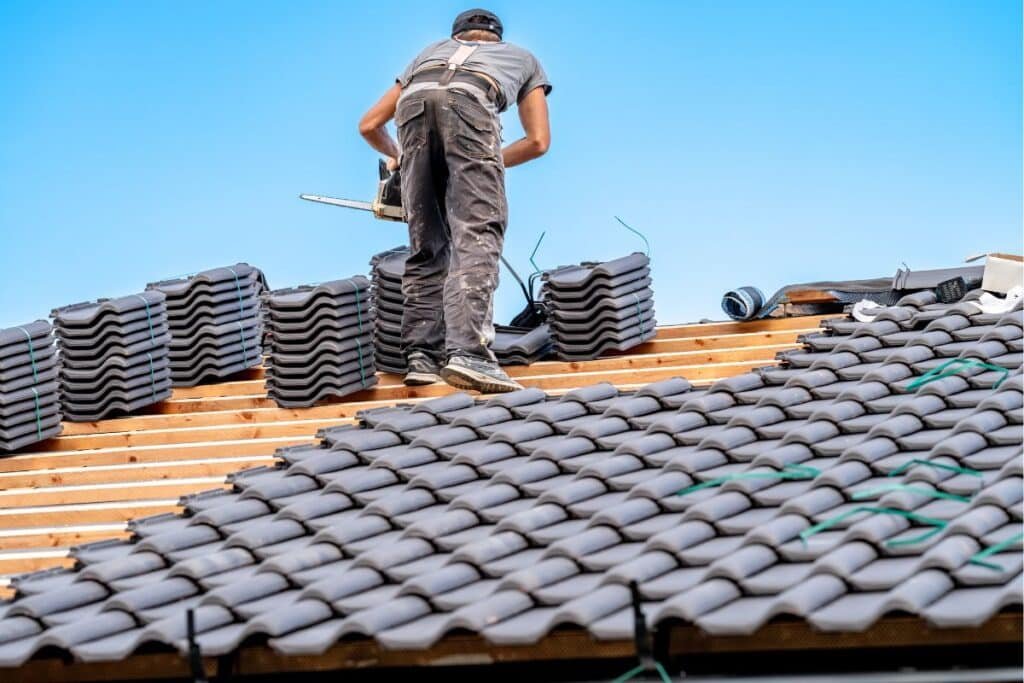In New Jersey, homes can be seriously damaged by storms, which is why knowing how to spot storm-damaged roofs in New Jersey is very important. If a storm-damaged roof goes unnoticed, then a small problem can quickly turn into leaks, mold, and costly repairs. That’s why it’s so important to check the roof storm damage assessment.
In this guide, you’ll learn the most common signs to look for and how to catch them early, so that you can protect your home before the next storm.
How to Spot Storm Damaged Roof: 7 Common Signs
Storms in New Jersey can leave you with a storm-damaged roof, and the signs aren’t always visible at first. But the longer you wait, the greater the chance you’ll face costly storm damage roof repairs. That’s because even small issues can quickly turn into serious problems after heavy rain or high winds. So, here’s how to spot storm storm-damaged roof:
1. Missing or Broken Shingles
Missing or broken shingles are one of the easiest signs to notice after a storm. That’s because strong winds can rip them away, and heavy rain can loosen the ones still holding on. When shingles are loose or missing, your roof is open to water getting in, which can quickly lead to leaks and expensive repairs.
2. Granules Collecting in Gutters
If your shingles look fine from the ground, don’t think your roof is in the clear just yet. The next step is to check your gutters. After a storm, you might spot small, sand-like pieces that have washed down. These granules protect shingles from the sun and rain, and losing too many means your storm-damaged roof is starting to wear out.
3. Dents, Cracks, or Punctures from Debris
Even if your gutters are clean, your roof could still have storm damage. Your gutters might be clean, but that doesn’t mean your roof is free from storm damage. Some damage isn’t visible right away. Strong winds, hail, or flying debris can still hit hard enough to leave dents, cracks, or small holes in your shingles or panels. One tuning remember, Even small marks can weaken your storm-damaged roof over time.
4. Water Stains on Ceilings or Walls
If roof damage lets water in, the first signs often show up inside your home. You might see brown or yellow stains spreading on ceilings or walls after heavy rain. These spots mean your storm-damaged roof is leaking. If you ignore them, the water can cause mold and ruin your insulation which lead to costly roof leak repair.
5. Sagging Roof or Soft Spots in the Decking
Water stains inside aren’t the only sign of trouble. The warning can also show up outside. All you need to do is step back and look at the roofline because it should be straight from end to end. If it bends or dips, there’s a good chance water has weakened the decking under your storm-damaged roof, and that’s a clear sign of roof damage.
6. Damaged or Loose Flashing Around Openings
If the roofline looks fine, the next thing to check is the flashing. That’s the thin metal around chimneys, skylights, and vents that keeps water out. After a big storm, wind, or heavy rain can loosen it or bend it out of place. Once there’s a gap, water can slip in and cause trouble.
7. Debris or Tree Branches Sitting on the Roof
Heavy tree branches or even smaller limbs can crack shingles, dent panels, or hide damage you can’t see from the ground. The weight by itself can put a lot of strain on your roof. It’s safest to have a pro handle the cleanup and do a full storm damage inspection.
To avoid bigger problems, call a storm damage roof repair contractor right away for a roof storm damage assessment.
Storm Damage Roof Repair Near You in New Jersey
After a storm, every minute counts because small problems can quickly turn into big repairs. When that happens, finding help fast becomes your top priority. That’s why if you’re searching for “storm damage roof repair near me,” you need a local team like A1 Oasis Construction who responds quickly and does the job properly.
A1 Oasis Construction LLC handles all everyday tasks, such as installing a roof, and if needed, we replace it. We work on all types of storm damage roofing and our service include a free storm damage roof inspection so that we can catch issues early. Not only for homes, we also offer Commercial Roof Inspection services.
Tips on How to Protect Your Roof from Storm Damage
You can’t stop storms from hitting, but you can make your roof ready for them. A few smart steps now can help prevent a storm-damaged roof later. Here are some of the tips that you can follow:
- Trim tree branches regularly so that they stay at least 6–10 feet away from your roof before hurricane season or strong winds arrive.
- Clear gutters and downspouts so that rainwater can flow freely during heavy downpours instead of backing up under your shingles.
- Reseal flashing around chimneys, vents, and skylights, because these areas often leak after nor’easters or heavy rain.
- Replace missing, curled, or cracked shingles to stop wind from peeling off more during storms.
- Install impact-resistant shingles or metal roofing if you live in a hail-prone or high-wind area.
- Secure roof fixtures like vents, satellite dishes, and solar panels so they don’t blow loose in a storm.
- Schedule a professional roof inspection each spring, fall, and after major storms to catch issues early.
- Keep a strong plastic sheet and some basic tools nearby so that you can make quick repairs if a storm causes sudden damage.
Protecting your roof is about being proactive. The more you prepare now, the less you’ll need to worry about storm damage roof repair.
Final Thoughts
Damage from storms isn’t always noticeable but now you know how to spot storm damaged roofs in New Jersey. So hopefully, these tips will help you avoid unexpected headaches and costly repairs. The safest step is to have a reliable local roofer check your home after every major storm.
A1 Oasis Construction LLC has the experience, tools, and local knowledge to find hidden damage and fix it before it spreads. Call us today for a free inspection and keep your roof ready for whatever the weather brings.
Frequently Asked Questions
How do roofing insurance claims for storm damage work?
Roofing insurance claims for storm damage start with a detailed record of what happened. Take photos of missing shingles, damaged flashing, or leaks right after the storm. Then, contact your insurance company to start the claim process. They’ll send an adjuster to inspect your roof and decide what’s covered.
What should I know before filing a storm damage roof insurance claim?
Before filing a storm damage roof insurance claim, you need to read your policy carefully so that you know exactly what is covered and the amount of your deductible. Storm damage can include things you don’t see from the ground, so it’s a good idea to have a roofer check it first.
Why is a storm damage roof inspection important after bad weather?
A storm damage roof inspection is important because not all damage is visible right away. High winds, hail, and heavy rain can cause loose shingles, hidden leaks, or dented flashing. A professional inspection finds these issues early, which can make your insurance claim stronger and prevent more costly damage later.
How to check for roof damage after a storm?
After the storm clears, walk around your property and look for missing shingles, damaged flashing, or debris on the roof. Then check gutters for shingle granules and inspect ceilings inside for water stains. If you see any signs of trouble then schedule a roof inspection from a professional storm damage roof repair contractor.
From where will I get the best storm damage roofing services?
The best storm damage roofing services come from trusted local contractors who know your area’s weather and roofing needs. In New Jersey, A1 Oasis Construction LLC offers quick inspections, expert repairs, and help with insurance claims to get your roof back in shape fast.

